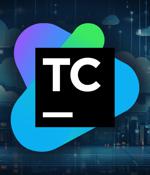Security News

Kim’s cyber cronies becoming more active, sophisticated in attempts to pwn global orgs The national cybersecurity organizations of the UK and the Republic of Korea (ROK) have issued a joint...

A North Korean state-sponsored threat actor tracked as Diamond Sleet is distributing a trojanized version of a legitimate application developed by a Taiwanese multimedia software developer called...

Microsoft says a North Korean hacking group has breached Taiwanese multimedia software company CyberLink and trojanized one of its installers to push malware in a supply chain attack targeting potential victims worldwide. According to Microsoft Threat Intelligence, activity suspected to be linked with the altered CyberLink installer file surfaced as early as October 20, 2023.

Sonatype's 9th annual State of the Software Supply Chain also covers regulations and how AI could help developers protect organizations from security risks. Attacks on software supply chains increased dramatically in 2023, with an increase of 200% compared to 2022, according to Sonatype's new report.

A new deceptive package hidden within the npm package registry has been uncovered deploying an open-source rootkit called r77, marking the first time a rogue package has delivered rootkit...

Software development firm JetBrains has fixed a critical vulnerability in its TeamCity continuous integration and continuous delivery solution, which may allow authenticated attackers to achieve remote code execution and gain control of the server. "As of September 25, 2023, Rapid7 is not aware of in-the-wild exploitation of CVE-2023-42793, and no public exploit code is available," shared Caitlin Condon, head of vulnerability research at Rapid7.

Well, you shouldn’t. It may already be hiding vulnerabilities. It's the modular nature of modern web applications that has made them so effective. They can call on dozens of third-party web...

The UK's Greater Manchester Police has admitted that crooks have got their mitts on some of its data after a third-party supplier responsible for ID badges was attacked. Assistant Chief Constable Colin McFarlane of Greater Manchester Police said: "We are aware of a ransomware attack affecting a third-party supplier of various UK organizations, including GMP, which holds some information on those employed by GMP.".

A supply chain attack is a cyberattack that focuses on a third-party supplier providing essential services or software to the supply chain. In this Help Net Security video, Dick O'Brien, Principal Intelligence Analyst in the Symantec Threat Hunter team, discusses the transformation of supply chain attacks.

A previously unidentified APT hacking group named 'Carderbee' was observed attacking organizations in Hong Kong and other regions in Asia, using legitimate software to infect targets' computers with the PlugX malware. Symantec reports that the legitimate software used in the supply chain attack is Cobra DocGuard, created by Chinese developer' EsafeNet,' and used in security applications for data encryption/decryption.